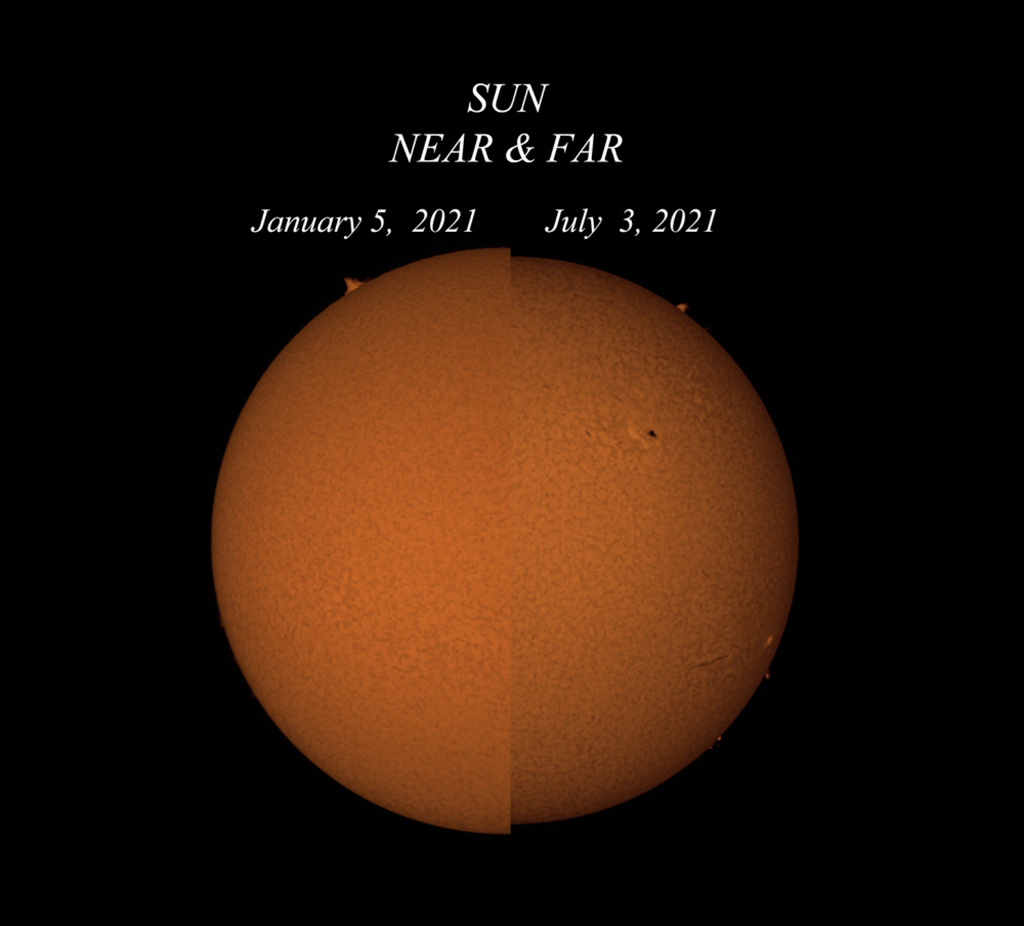近日点到远日点
(原标题: Perihelion to Aphelion)
2021-07-08
浏览次数: 184
2021年远日点发生在7月5日。这是地球在椭圆轨道上离太阳最远的点。当然,与太阳的距离并不能决定季节。这些都是由地球自转轴的倾斜决定的,所以7月在北半球仍然是夏天,在南半球仍然是冬天。但这确实意味着,从地球上看,7月5日的太阳是最小的视尺寸。这张合成图巧妙地比较了两张太阳的照片,这两张照片都是用同一架望远镜和照相机拍摄的。左半部分是在2021年近日点(1月2日)附近拍摄的,近日点是地球轨道上最近的点。右图是在2021年远日点之前记录的。否则很难注意到,太阳在近日点和远日点之间的视直径变化略高于3%。
查看原文解释
Aphelion for 2021 occurred on July 5th. That's the point in Earth's elliptical orbit when it is farthest from the Sun. Of course, the distance from the Sun doesn't determine the seasons. Those are governed by the tilt of Earth's axis of rotation, so July is still summer in the north and winter in the southern hemisphere. But it does mean that on July 5 the Sun was at its smallest apparent size when viewed from planet Earth. This composite neatly compares two pictures of the Sun, both taken with the same telescope and camera. The left half was captured close to the date of the 2021 perihelion (January 2), the closest point in Earth's orbit. The right was recorded just before the aphelion in 2021. Otherwise difficult to notice, the change in the Sun's apparent diameter between perihelion and aphelion amounts to a little over 3 percent.
© Richard Jaworski
